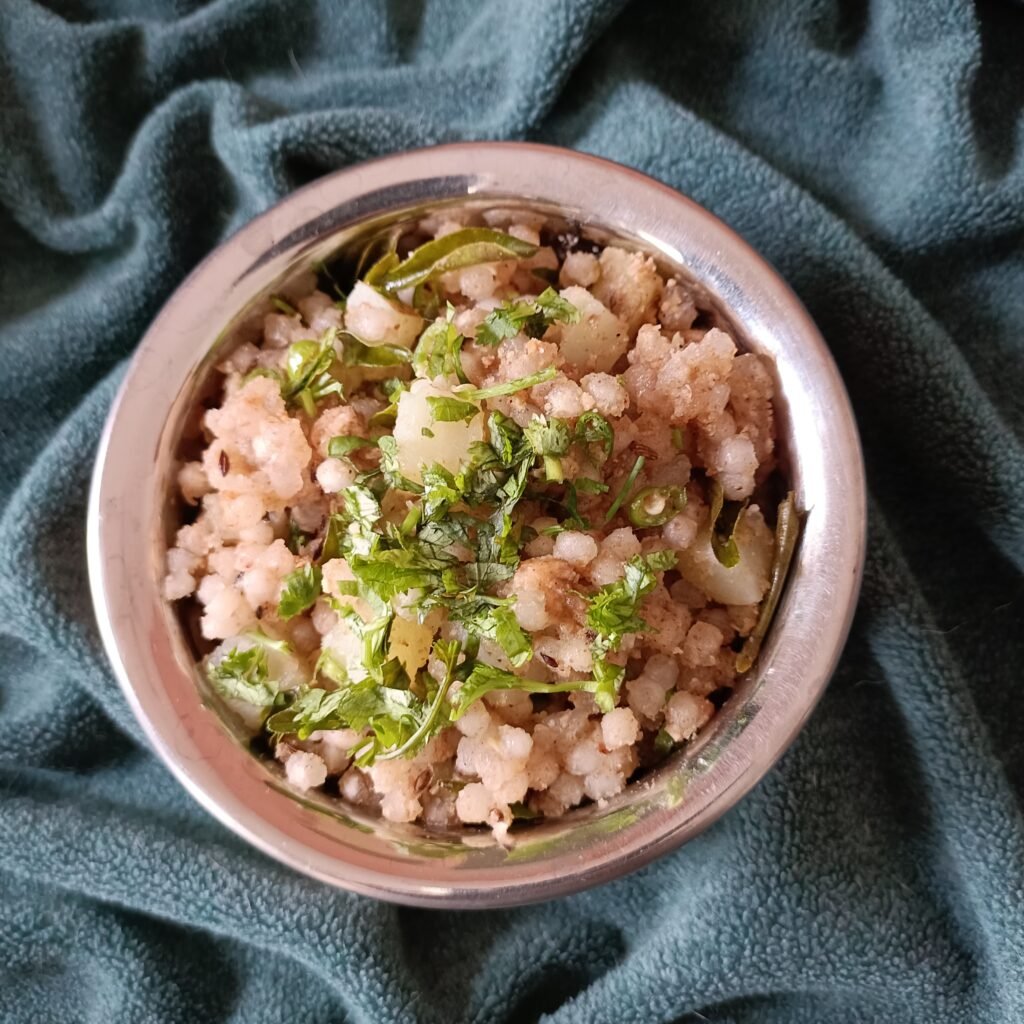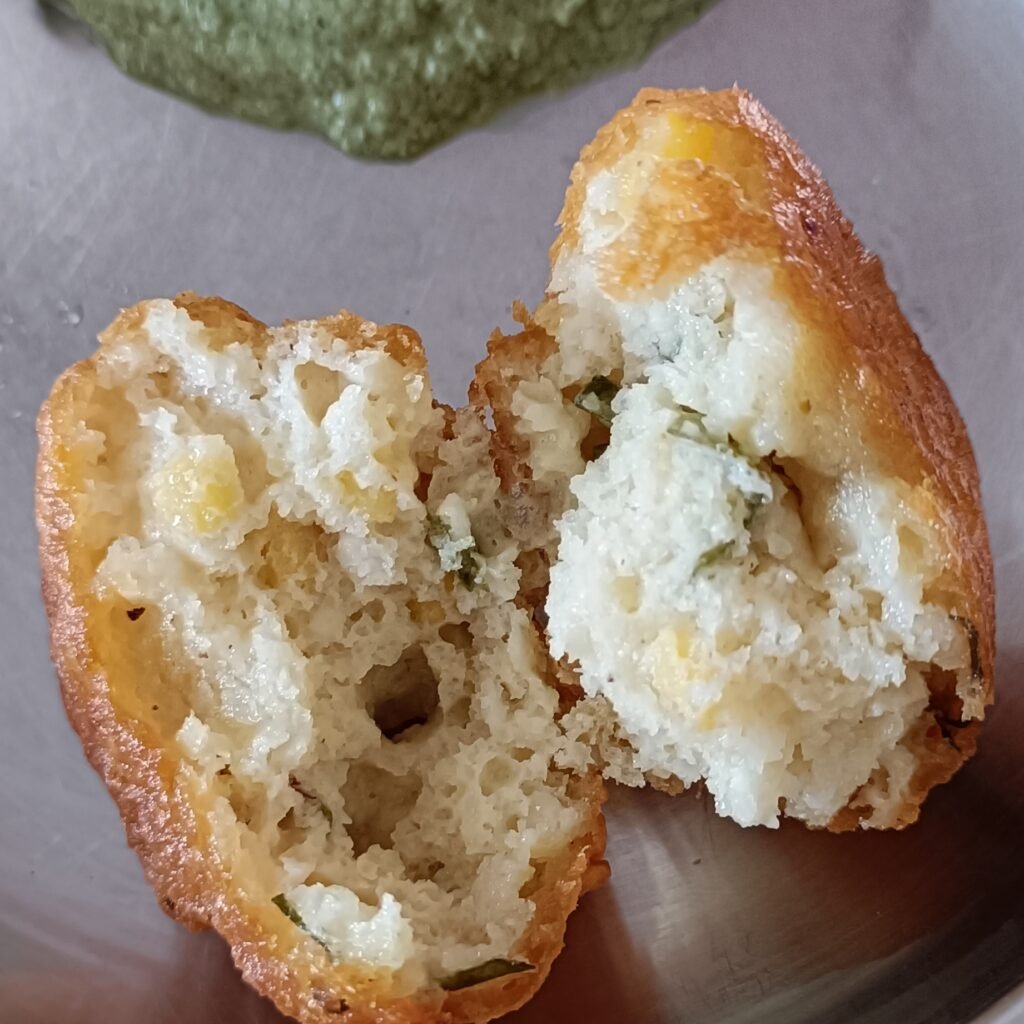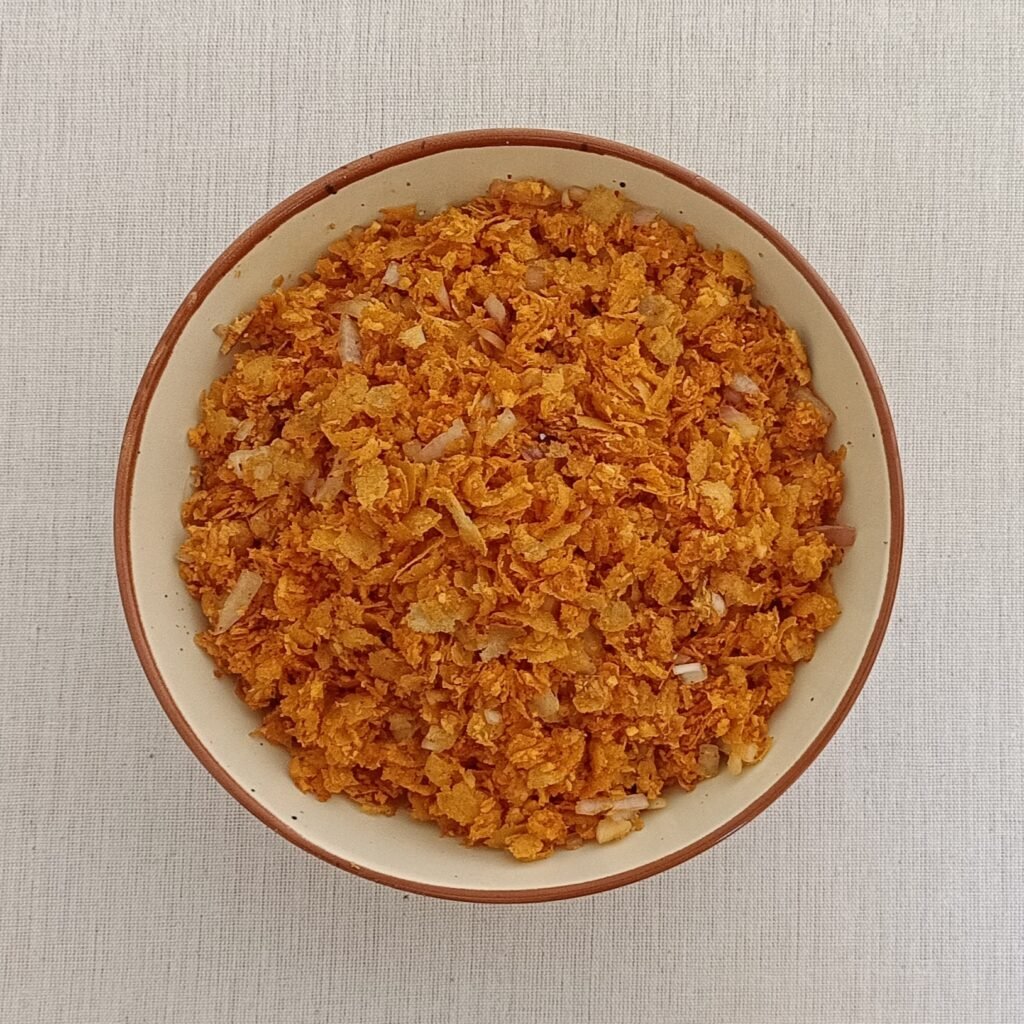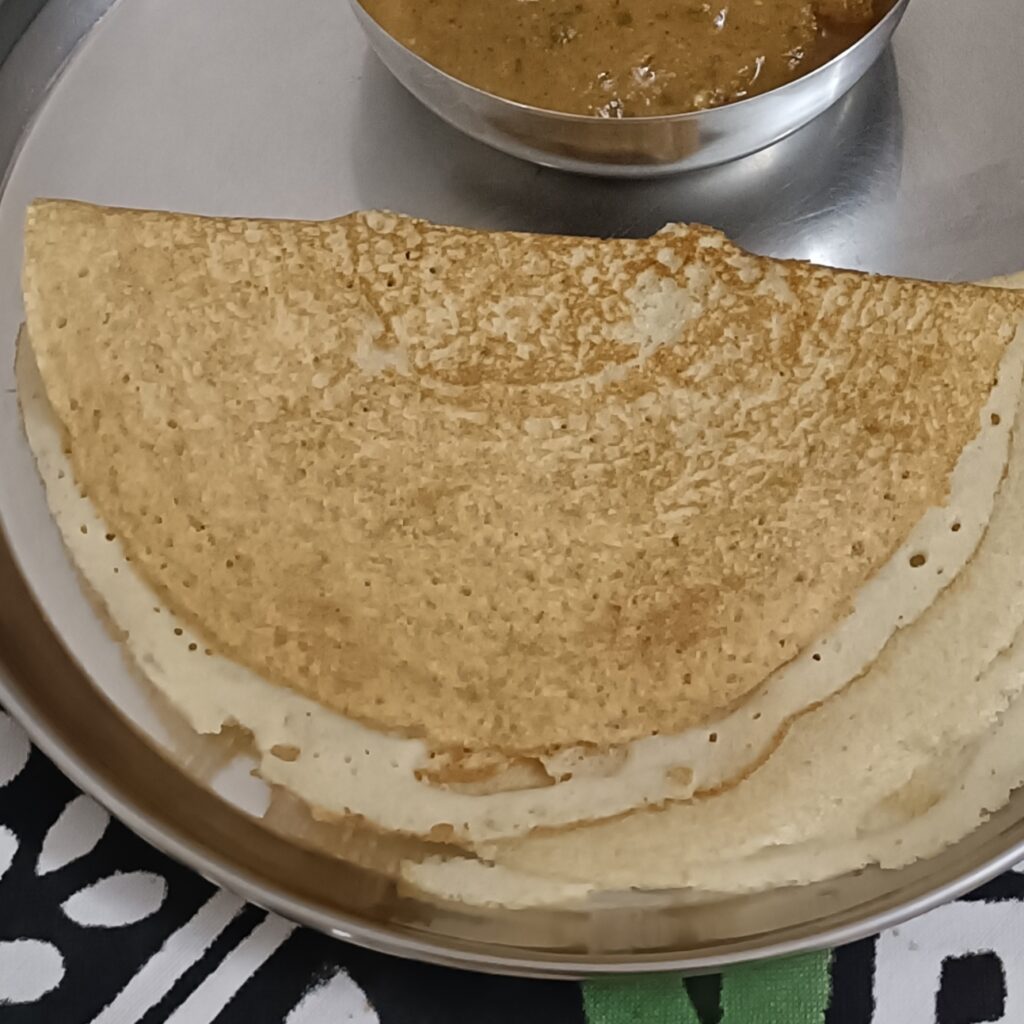Kokum Kadhi
Recipe: Gemini Xettigar Makes 1 litre Ingredients For Tempering (optional) Method Optional: Heat oil in an iron tempering ladle. Add mustard seeds, cumin seeds and
Recipe: Gemini Xettigar Makes 1 litre Ingredients For Tempering (optional) Method Optional: Heat oil in an iron tempering ladle. Add mustard seeds, cumin seeds and

Poha is made by soaking the rice and then flattening and drying it. It can be considered to be an uncooked form of rice yet doesn’t really need to be cooked to be consumed. It has a reasonable amount of carbohydrates, some potassium, sodium and protein, and is easily digested.
Coconut is a great source of natural fats and lots of fibre. Fibre helps in digestion as well as regulating the absorption of nutrients.
Peanuts are a great source of plant protein and enhance the nutritional value of poha. Peanuts are packed with healthy fat, high-quality protein, and potassium, phosphorous, magnesium, and B vitamins. Peanut skins also contain antioxidants. Peanuts are best eaten raw after soaking and not roasted.

Sabudana is high in both calories and carbohydrates and is therefore an excellent source of quick energy. It’s great before a workout because it’s a wonderful source of energy and after a heavy workout as it delays fatigue. It is said to improve endurance too. Just make sure it isn’t made in a lot of oil. Because it is gluten free, it is good for people with Celiac disease as it doesn’t cause any discomfort like bloating, diarrhoea or stomach pain. In fact, the dietary fibre it contains helps digestion. It can help weight gain in a healthy manner if eaten in larger quantities. The high content of potassium in it may help improve heart health by flushing out sodium thus lowering blood pressure. As a great source of calcium, it is fed to babies over a year old to develop stronger bones and may also help prevent osteoporosis.
Peanuts are packed with healthy fat, high-quality protein, and potassium, phosphorous, magnesium, and B vitamins. Peanut skins also contain antioxidants. Peanuts are best eaten raw and not roasted.
Potatoes are rich in compounds like flavonoids, carotenoids and phenolic acids, which are antioxidants and help to neutralize potentially harmful molecules known as free radicals. Potato skins are alkaline in nature so it’s best to leave them on.

Wheat has been used in various forms, especially ground roughly or fine for centuries. Some people find it difficult to digest wheat because of the gluten in it. Wheat is easier to digest when eaten with a lot of vegetables that contain the fibre. Wheat contains relatively high amounts of protein, dietary fiber, carbohydrates and minerals like calcium. It also contains micronutrients like magnesium, phosphorus, potassium and B vitamins. Wheat kernels have three parts: the bran (outer layer), the germ (core of the kernel), and the endosperm (starchy middle layer). White flour is made by removing the bran and the germ leaving only the endosperm which contains only protein, carbohydrates, and a small number of B vitamins and minerals. The bran and germ layers that are removed are rich in fiber, B vitamins, antioxidants, phytochemicals, and minerals like iron, copper, zinc, and magnesium. Therefore, it is best to eat whole wheat than refined flour/maida as well as eat it with a lot of vegetables.

Urad dal is a very common lentil or as we call it a pulse that is found in almost each South Indian home. It is used in the whole or split forms both with and without the black skin on. Urad dal has a good number of amino acids and gets a complete protein profile with all amino acids when combined with a grain like rice. It has a low glycaemic index and because it also contains indigestible fibre it helps in maintaining sugar levels by releasing energy slowly. It is a good source of carbohydrates, iron, calcium and smaller amounts of lipids, all of which may support the growth of bones and help improve heart conditions. Urad dal when eaten with its skin on is a good source of prebiotics as the indigestible skin stimulates the growth of helpful bacteria in the intestine thus improving gut health. Antioxidants such as polyphenols in urad dal may help reduce the impact of free radicals that damage cells thus preventing conditions like cancer, neurodegenerative diseases, and atherosclerosis, and the phenolics, tannins, flavonoids, and phytic acid may help keep the liver and kidney in good order.
Chana is eaten in both the whole and split forms and as besan or the ground form all over India. It is considered to be a great source for muscular health and better immunity as it has 13 grams of protein in every 100 grams. The folate in chana dal may help prevent diseases like stroke, dementia, and depression and the calcium in it can help in preventing osteoporosis and improve bone density. Like urad dal, chana dal has a good amount of fibre and a low glycaemic index making it a good option for maintaining sugar levels and increasing the feeling of satiety faster. The healthy fats in chana have antioxidant properties that may help reduce inflammation. Most importantly, pulses help restore soil fertility by fixing nitrogen in it.

Poha is made by soaking the rice and then flattening and drying it. It can be considered to be an uncooked form of rice yet doesn’t really need to be cooked to be consumed. It has a reasonable amount of carbohydrates, some potassium, sodium and protein, and is easily digested. Coconut is a great source of natural fats and lots of fibre. Fibre helps in digestion as well as regulating the absorption of nutrients.
Potatoes are a root vegetable enjoyed by old and young alike. Potatoes are rich in energy in the form of carbohydrates, contain a considerable amount of protein, vitamins C and B6, niacin and folate, and minerals like potassium, manganese, magnesium and phosphorous, fibre and compounds like flavonoids, carotenoids and phenolic acids, which are antioxidants that help to neutralize potentially harmful molecules known as free radicals. The skin of the potato apart from containing a considerable amount of fibre is not only alkaline in nature but also contains a great amount of the vitamins and minerals, so it’s best to cook and eat potato in its whole form. However, potatoes when fried or cooked with a lot of oil are pretty unhealthy, so it’s best to avoid French fries or fried potato dishes like this one unless you can make it with just a few drops of oil.

Many cultures consider rice to be a staple grain because it contains vital carbohydrates that provide the body energy even though it contains less protein than other cereals. Carbohydrates can keep you energized and satisfied and are important for fueling exercise. Rice, particularly white rice, generally gets digested easily because it is low in fat and fiber, and so it’s better to eat brown or semi-brown rice. Brown rice, especially, is an excellent source of many nutrients, including fiber, manganese, selenium, magnesium, and B vitamins. Urad dal, also known as black gram, is high in protein, fibre, and minerals. It’s a versatile ingredient that can be used in many dishes. Urad dal is high in protein compared to other legumes and is a good source of both soluble and insoluble fibre. It also contains iron, which can help increase energy levels, calcium, phosphorus, and magnesium, which are vital for strong bones and teeth, potassium, which can help reduce cholesterol levels and improve heart health, and zinc as well as niacin, thiamine, riboflavin, and other B vitamins. The antioxidants in urad dal help protect the body against free radicals and strengthen the immune system. Urad dal has a low glycaemic index, making it suitable for maintaining stable blood sugar levels.
In Northern India, coarsely ground wheat is called sooji, and in South India, it is called rava. Semolina as it is called in English is used in many Indian dishes both sweet and savory. Wheat is one of the oldest and most important of all cereal crops globally. Though it is majorly grown in some northern states of India, it is popularly used in making upma or uppit in the South. It is an important source of carbohydrates as well as the leading source of proteins (in the form of gluten) in human food, having a protein content of about 13%. It’s the gluten in wheat flour that gives elasticity and strength to dough. Whole wheat flour, made by grinding the entire wheat kernel, is generally considered healthier than refined wheat flour (maida) because it retains the bran and germ, which are rich in fiber, vitamins, and minerals. Rava or semolina is usually made from whole wheat in India. Many people prefer to use millets instead of wheat to make this dish as wheat is generally higher in gluten content and lower in fibre than most millets. However, compared to rice, wheat has a lower glycemic index and helps slow down digestion as well as aids bowel movement. It is important to note that gluten is a problem only for those who react negatively to it, or test positive for celiac disease. Most people can and have eaten gluten most of their lives, without any adverse side effects. Indian varieties of wheat like Sharbati and MP Shivor Gold have a much higher gluten content than Shivor, and MP Shivor has the least amount of gluten in it. Having shared this information, we think it is best to eat wheat or other cereals in as small quantities as possible and have cooked vegetables, pulses, and salads made with uncooked vegetables and fruit, as the main part of a meal.
In Northern India, coarsely ground wheat is called sooji, and in South India, it is called rava. Semolina as it is called in English is used in many Indian dishes both sweet and savory. Wheat is one of the oldest and most important of all cereal crops globally. Though it is majorly grown in some northern states of India, it is popularly used in making upma or uppit in the South. It is an important source of carbohydrates as well as the leading source of proteins (in the form of gluten) in human food, having a protein content of about 13%. It’s the gluten in wheat flour that gives elasticity and strength to dough. Whole wheat flour, made by grinding the entire wheat kernel, is generally considered healthier than refined wheat flour (maida) because it retains the bran and germ, which are rich in fiber, vitamins, and minerals. Rava or semolina is usually made from whole wheat in India. Many people prefer to use millets instead of wheat to make this dish as wheat is generally higher in gluten content and lower in fibre than most millets. However, compared to rice, wheat has a lower glycemic index and helps slow down digestion as well as aids bowel movement. It is important to note that gluten is a problem only for those who react negatively to it, or test positive for celiac disease. Most people can and have eaten gluten most of their lives, without any adverse side effects. Indian varieties of wheat like Sharbati and MP Shivor Gold have a much higher gluten content than Shivor, and MP Shivor has the least amount of gluten in it. Having shared this information, we think it is best to eat wheat or other cereals in as small quantities as possible and have cooked vegetables, pulses, and salads made with uncooked vegetables and fruit, as the main part of a meal.